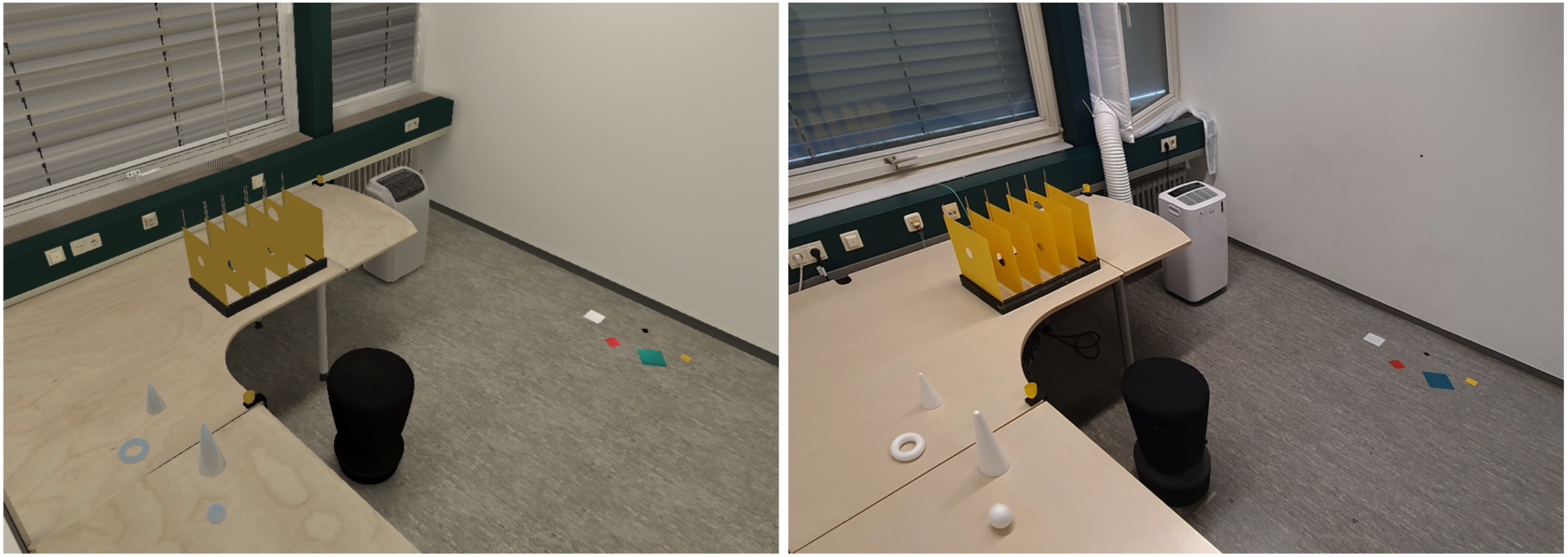Assessing Depth Perception in VR and Video See-Through AR: A Comparison on Distance Judgment, Performance, and Preference
June 2025

What is the paper about?
This paper looks at how people see and judge distances differently in Virtual Reality (VR) compared to Video See-Through Augmented Reality (VST AR). VR puts users in a fully virtual environment, while VST AR blends real and virtual elements by overlaying video feeds with digital content. The study explores how accurately people can judge distance and perform tasks in each setting, aiming to identify which setup helps people interact more naturally and effectively with mixed virtual and real content.
What are the results?
In VR, people could judge distances more accurately and complete tasks faster. VST AR, however, often led to depth perception mistakes, with users underestimating distances. People also had to move their heads more to see clearly, which slowed them down. Surprisingly, even though VR was easier for tasks, participants preferred VST AR because it felt more like a natural part of their physical surroundings, giving them a stronger sense of being present in their environment.
What are possible fields of application?
These findings could improve various fields where accurate spatial perception is essential:
- Medicine: In surgery, VST AR could overlay digital guides on real-world patients, aiding doctors with visuals on precise depths and locations.
- Training and Industrial Work: Workers can learn tasks by seeing real objects combined with digital instructions, especially helpful for technical jobs.
- Remote Collaboration: People in different locations could use AR to interact with shared 3D models as though they’re in the same room.
- Education and Games: AR can offer immersive learning and gaming experiences, blending reality with virtual guidance or challenges.
How does the research in the paper contribute to shaping the metaverse?
The research highlights key challenges in creating the metaverse, a space where digital and physical worlds merge. By examining how people perceive depth in VST AR, the study suggests improvements for future devices, so users can interact with digital elements as naturally as possible. Understanding and fixing depth perception issues in AR will be crucial to creating a seamless, lifelike metaverse experience where users feel truly present and engaged.
Reference
Westermeier, F., Brübach, L., Wienrich, C., & Latoschik, M. E. (2024). Assessing Depth Perception in VR and Video See-Through AR: A Comparison on Distance Judgment, Performance, and Preference. IEEE Transactions on Visualization and Computer Graphics, 30(5), 2140–2150. IEEE Transactions on Visualization and Computer Graphics. https://doi.org/10.1109/TVCG.2024.3372061








